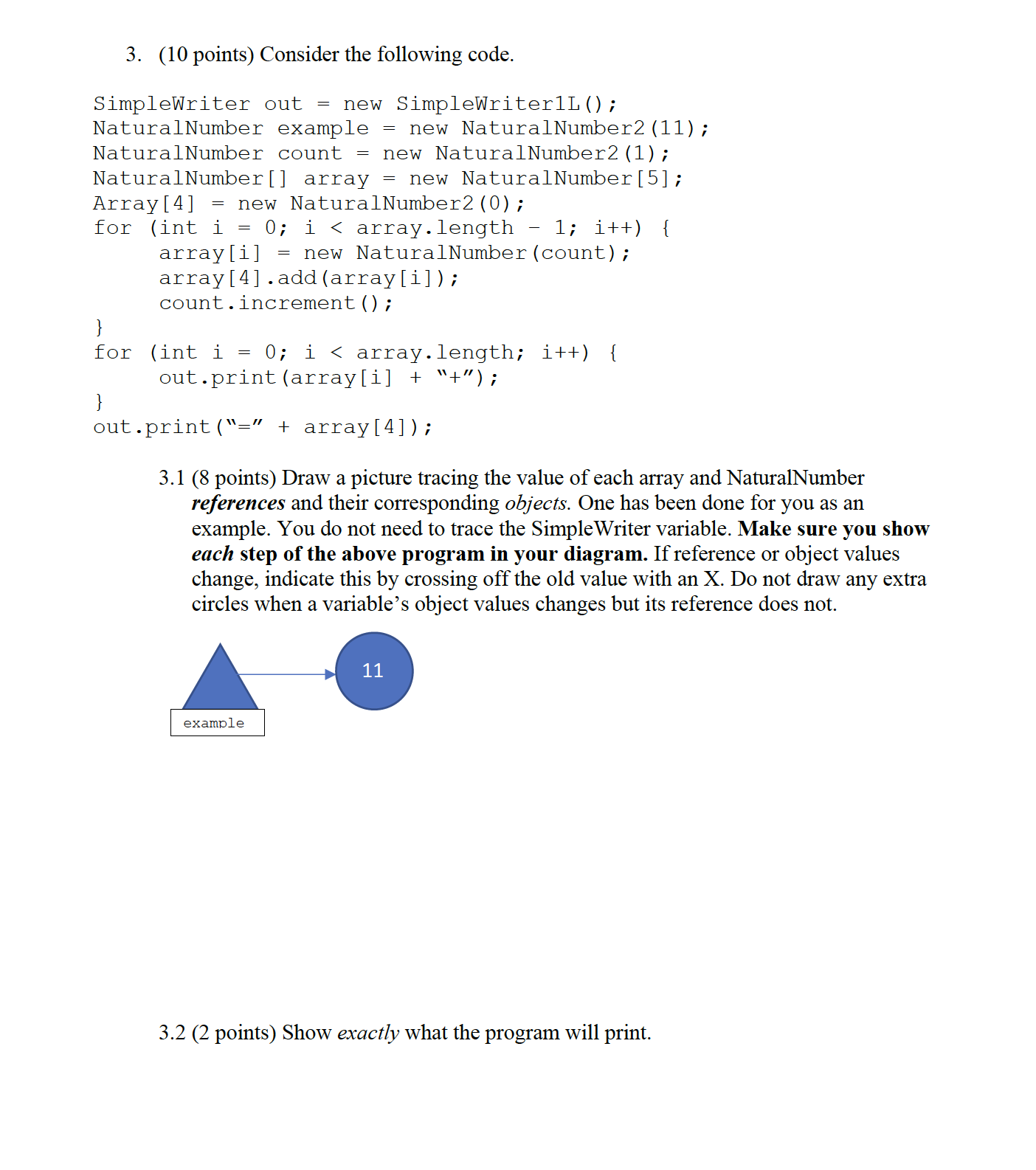Answered step by step
Verified Expert Solution
Question
1 Approved Answer
3. (10 points) Consider the following code. = new SimpleWriter1L() ; SimpleWriter out NaturalNumber example = new NaturalNumber2 (11); NaturalNumber count new NaturalNumber2 (1);

3. (10 points) Consider the following code. = new SimpleWriter1L() ; SimpleWriter out NaturalNumber example = new NaturalNumber2 (11); NaturalNumber count new NaturalNumber2 (1); NaturalNumber[] array = new NaturalNumber[5]; Array[4] new NaturalNumber2(0); for (int i = 0; i < array.length 1; i++) { array[i] new NaturalNumber (count); } = array[4].add(array[i]) ; count.increment (); for (int i 0; i < array.length; i++) { } out.print(array[i] + "+) ; out.print("=" + array[4]); 3.1 (8 points) Draw a picture tracing the value of each array and NaturalNumber references and their corresponding objects. One has been done for you as an example. You do not need to trace the SimpleWriter variable. Make sure you show each step of the above program in your diagram. If reference or object values change, indicate this by crossing off the old value with an X. Do not draw any extra circles when a variable's object values changes but its reference does not. example 11 3.2 (2 points) Show exactly what the program will print.
Step by Step Solution
There are 3 Steps involved in it
Step: 1
Answer SimpleWriter out NaturalNumber example NaturalNumber c...
Get Instant Access to Expert-Tailored Solutions
See step-by-step solutions with expert insights and AI powered tools for academic success
Step: 2

Step: 3

Ace Your Homework with AI
Get the answers you need in no time with our AI-driven, step-by-step assistance
Get Started


